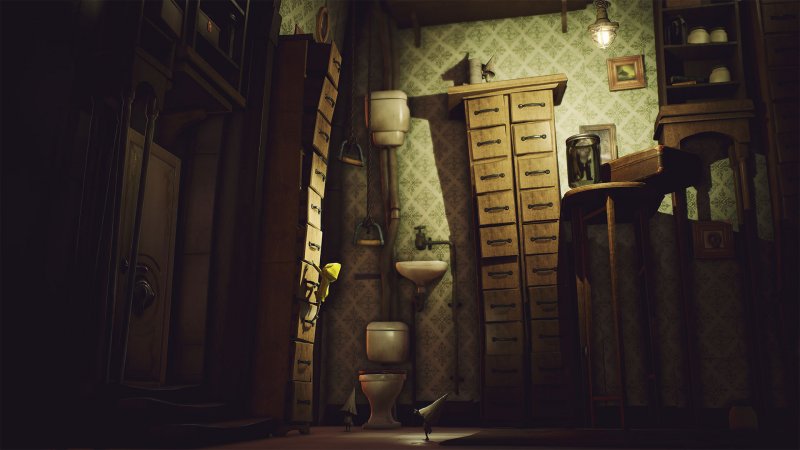Little Nightmares was immediately appreciated for the special atmosphere that emerged from the first trailers. While going to place on a path already successfully beaten by other illustrious figures – among which we remember the excellent Inside released last year – the new
title created by Tarsier Studios seemed to have all the credentials to attract the attention of the fans and offer again a very specific reading of the puzzle-platform genre, inspired by incessant dangers, enigmas environmental profusion and a deliberately implicit narrative component on which to incardinate the gaming experience. Although it is a young reality, the Swedish team got to the bone by supporting the creation of high-level titles like LittleBigPlanet and Tearaway Unfolded.
With the birth of Little Nightmares, however, a decisive turn was made towards much darker themes, which in part derive from the fairytale collections of the Grimm brothers and the stories of the British author Roald Dahl.
The play structure is sustained by the uncertain role of the young protagonist and by her evident inferiority in the presence of a cynical and openly hostile world. The result is a strong sense of duty that spans the entire duration of the adventure, while stimulating the intuitiveness of the player both in terms of interaction and that of narrative understanding.
Little Nightmares brings back childhood fears and does so with a very personal style
SILENCE, ANGUISH AND … A LIGHTER TO OVERCOME FEAR
The small and seemingly helpless protagonist of Little Nightmares is called Six. We meet her wrapped in the dim light, in a bizarre yellow raincoat that protects her from head to toe. You can not help but try to imagine the features, under the wide hood that hides its identity.
Walking barefoot and supported by slender legs, Six must try to make his way in a place that at first glance does not seem to promise anything good.
The game does not explicitly tell us about it, but we find ourselves inside “Le Fauci”, a mysterious and equally disturbing vessel that appears every year from the depths of the abyss, in ever different places, to host people who are obviously afflicted by an overflowing cupidity .
The depths of the structure also host numerous children, evidently left to the mercy of a cruel fate. Six, however, is different from others. She is hungry, weak as a child can be in the face of a hostile world, yet she can rely on a non-indifferent gift: wit.
It is precisely on these premises that the tortuous voyage of the player is set in motion, a path full of dangers and obstacles to overcome, where the only objective that appears immediately evident is the flight.
One of the distinctive features of Little Nigthmares, and probably also the most noteworthy one, is undoubtedly made up of the artistic direction. The work offers very particular and suggestive views, putting the accent on the constant play of contrasts made possible by the modulation of light.
Although these are very dark scenarios, on more than one occasion the lighting is reduced to the minimum terms or is missing, to the point of forcing the child to use a lighter to avoid losing orientation. But during the progression the audio sector also plays a fundamental role.
Yes, because although the soundtrack has been reduced to the bone, an excellent work has been done on the sounds surrounding the structure, allowing the user to listen to the soundtrack.As mentioned, the story is entrusted entirely to the events represented in real time on the screen, without the filters resulting from the dialogues or lines of text.

